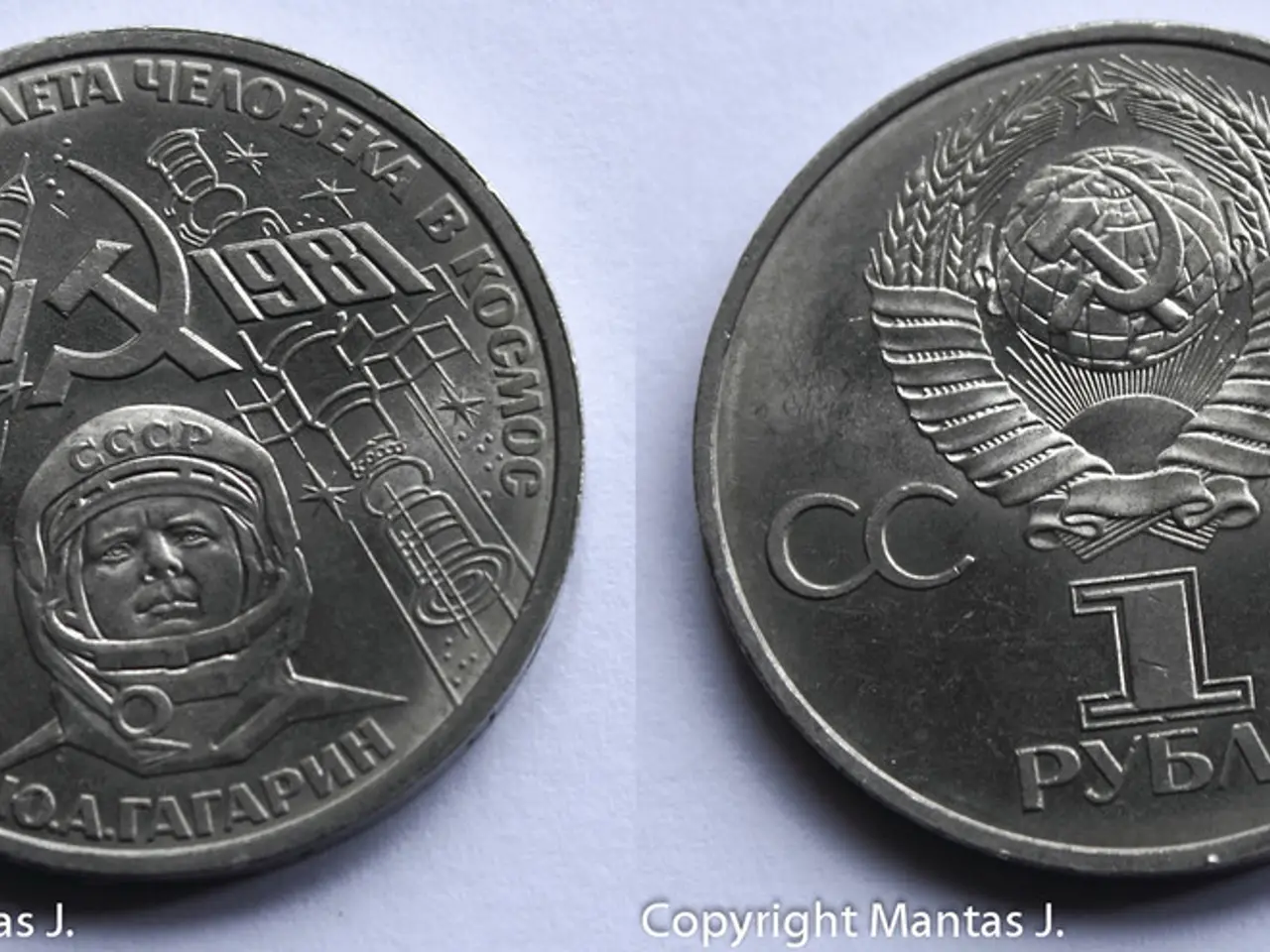Digital authorities resolutely oppose the integration of digital currencies
The dominance of the U.S. dollar as the global reserve currency is facing challenges, with the euro, Chinese renminbi (yuan), and gold emerging as potential alternatives. However, none of these currencies currently pose a serious threat to the dollar's dominance.
Pierpaolo Benigno and Edoardo Reviglio suggest that Europe has a strategic opportunity to develop its own safe asset, while Jesper Koll, global ambassador and expert director of Monex Group, Japan, sees de-dollarisation as an opportunity for Japan to become more prominent. Yet, the euro faces obstacles from political uncertainty among its diverse member countries and fragmented governance. The renminbi is growing in international use, but capital controls, less transparent financial markets, and legal framework limits constrain its rise as a reserve currency.
Gold is increasingly relied upon by central banks as a hedge against currency and geopolitical risks, serving as a safe harbor in turbulent times. The U.S. national debt and persistent deficits raise doubts about the dollar's long-term stability and credibility, while geopolitical tensions and shifts in global power, exemplified by BRICS efforts to reduce dollar dependence and develop independent financial systems, also impact the dollar's future.
The potential impact of technological disruptions such as central bank digital currencies (CBDCs) and digital payment systems could alter global transaction frameworks, though cryptocurrencies remain too volatile and lack sovereign backing to serve as reserve currencies. The historical dominance of a single reserve currency due to network effects means a fragmented multi-currency system is unlikely, as it would increase transaction costs and risks.
Aaron Hurd, senior portfolio manager at State Street Investment Management, states that lower returns and higher risk mark a change in dynamics for the US currency. OMFIF's Global Public Investor 2025 found that no central bank surveyed holds any digital assets, and 93% have no intention of doing so. Michael Paulus, Alberto Torres, Sunil Kaushik, Natalie Tsui, Tobias Cheung, and others at Citi note that central banks are turning back to gold.
Mark Sobel, US chair at OMFIF, suggests that while the administration's actions may erode the dollar's dominance, it is not going anywhere soon. Harold James writes that countries in periods of instability historically turn to gold, and this trend continues today. The senior economist at OMFIF, Yara Aziz, is writing about doubts growing around the foundations of dollar dominance. Jens Søndergaard, currency analyst at Capital Group, notes that a weaker dollar amid US policy volatility is creating opportunities for other currencies, but there is no real alternative yet.
Max Castelli and Yara Aziz discuss the global reserve response after 2 April, a date proclaimed by President Trump as Liberation Day. Nat Benjamin joins OMFIF to outline key considerations for fostering a steady-state liquidity environment that supports stability and growth. Massimiliano Castelli, head of strategy and advice at UBS Asset Management, believes reports of the dollar's demise are exaggerated.
In summary, while the U.S. dollar remains dominant due to its scale, liquidity, and crisis infrastructure, growing economic and geopolitical uncertainties motivate central banks to diversify reserves into euros, renminbi, and gold. Yet, structural, political, and financial market challenges limit these currencies' ability to supplant the dollar as the primary global reserve currency soon.
[1] Benigno, P., & Reviglio, E. (2021). A European safe asset: time for action. OMFIF. [2] Castelli, M., & Aziz, Y. (2021). The global reserve response to 2 April: the end of the dollar era? OMFIF. [3] Hurd, A. (2021). The changing dynamics of the US currency. State Street Investment Management. [4] Koll, J. (2021). De-dollarisation: an opportunity for Japan. OMFIF. [5] Paulus, M., Torres, A., Kaushik, S., Tsui, N., Cheung, T., & others. (2021). Central banks turn back to gold. Citi.
- Pierpaolo Benigno and Edoardo Reviglio suggest that Europe has a strategic opportunity to develop its own safe asset as part of a broader strategy to challenge the dominance of the U.S. dollar.
- Gold is being relied upon by central banks as a hedge against currency and geopolitical risks, serving as a safe harbor in turbulent times, according to Aaron Hurd, senior portfolio manager at State Street Investment Management.
- Jesper Koll, global ambassador and expert director of Monex Group, Japan, sees de-dollarization as an opportunity for Japan to become more prominent.
- The potential impact of technological disruptions such as central bank digital currencies (CBDCs) and digital payment systems could alter global transaction frameworks, but cryptocurrencies remain too volatile and lack sovereign backing to serve as reserve currencies.
- The dominance of the U.S. dollar is facing challenges from emerging alternatives such as the euro, Chinese renminbi (yuan), and gold, but none of these currencies currently pose a serious threat to the dollar's dominance.
- Mark Sobel, US chair at OMFIF, suggests that while the administration's actions may erode the dollar's dominance, it is not going anywhere soon.
- Michael Paulus, Alberto Torres, Sunil Kaushik, Natalie Tsui, Tobias Cheung, and others at Citi note that central banks are turning back to gold.
- Max Castelli, head of strategy and advice at UBS Asset Management, believes reports of the dollar's demise are exaggerated, suggesting that the dollar's dominance continues due to its scale, liquidity, and crisis infrastructure.







